Two common water treatment systems for homes are whole house water filters and water softeners.
It’s easy to confuse these systems as being the same, when in fact they both offer very different results, and can’t be used interchangeably.
In this guide, we’ve shared everything you need to know about water softeners vs water filters.
📌 Key Takeaways
- Water softeners use ion exchange to soften water (remove hard water minerals), while whole house water filters use filtration to remove contaminants like chlorine and heavy metals.
- You need a water softener if you have limescale, skin and hair irritation, and white spotting on your dishware.
- You need a drinking water filtration system if your water tastes like chemicals or has a metallic taste, or if a water test reveals trace amounts of dangerous contaminants like lead.
Table of Contents
🆚 Water Softener Vs Water Filter Overview
Let’s look at the main difference between water softener vs water filter.
Both water softening and filtering produce higher-quality water for your home, but they each have different purposes.
- Water softening systems are designed to remove calcium and magnesium hardness-causing minerals from water, producing soft water.
- Water filters focus broadly on contaminant reduction, with the aim of producing clean, better-tasting, healthier water.
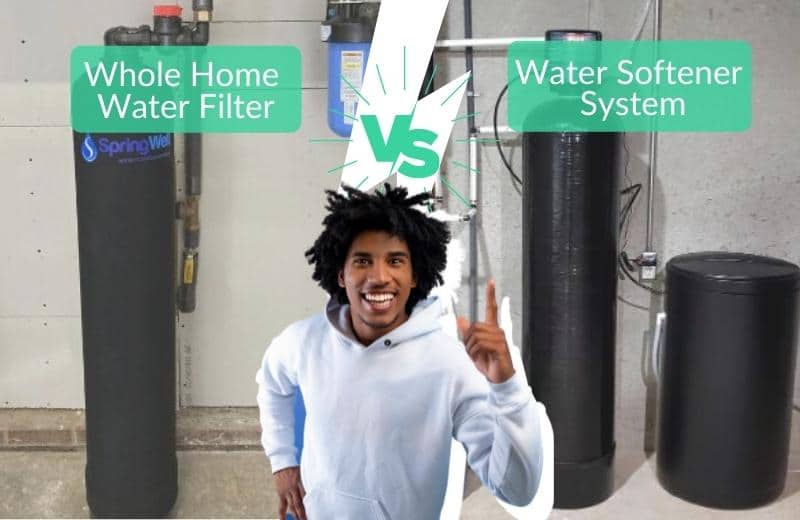
🚿 What Are Water Softeners?
Water softeners are whole-home appliances that soften water by removing or altering the adhesion properties of hardness minerals.
There are two common types of water softeners available: salt-based softeners and salt-free softeners (otherwise known as water conditioners).
- Salt-based softeners use ion exchange resins to exchange calcium and magnesium hardness minerals with sodium ions. This ion exchange water treatment process virtually eliminates water hardness, helping to protect your home from hard water problems like limescale buildup.
- Salt-free softener systems (salt-free water conditioner units) use scale-control media technology called template-assisted crystallization (TAC), in which hardness minerals are crystallized, preventing them from sticking to surfaces in the form of scale.
👉 Read more about salt-based vs salt-free systems
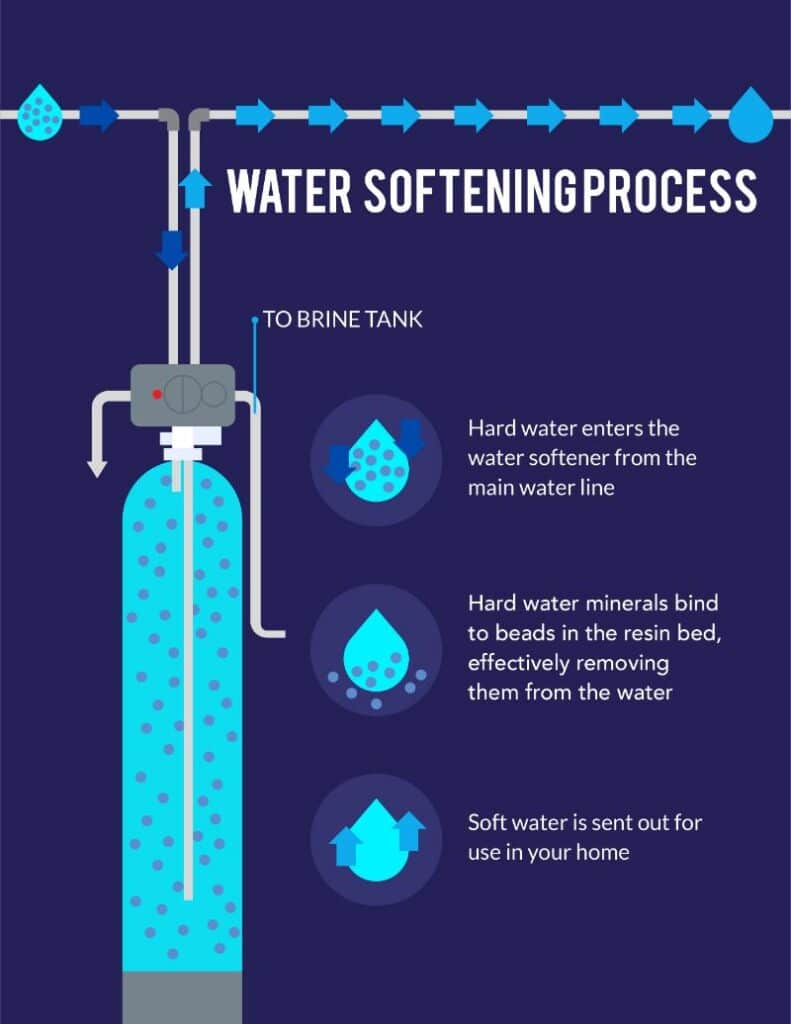
What Issues do Water Softeners Address?
Water softeners address the following issues:
- Water heater efficiency – A water softening system can improve the efficiency of your hot water heater by preventing scale build-up on the inside of the heater.
- Cleaning chores – Water softener systems eliminate scale and soap scum, so you’ll no longer need to clean them off your fixtures and appliances. Some water softener systems are also capable of reducing iron & sulfur, further eliminating stains.
- Appliance longevity – Using a water softener will ensure your home’s appliances have longer lifespans and operate more efficiently.
- Skin and hair conditions – Water softeners remove hard water ions that could stick to your skin and hair and cause itchiness and dryness.
- Laundry quality – A water softening system can eliminate laundry problems like gray staining and rough textures, and you can use less detergent per wash.
👉 See the best water softener systems of 2025 reviewed side by side
🚰 What Are Water Filters?
Water filters use one or several filtration cartridges to remove contaminants that affect water quality, like chlorine, lead, arsenic, and chromium.
There are numerous types of water filters, including multi-stage water filtration systems and single-stage (but often multi-layer) filters.
You can find a water filter for almost all locations in your home. If you want to protect your entire water supply, install a whole house water filtration system. If you just want to treat your tap water, install a countertop or under-sink drinking water filtration system. Or, to filter your shower water and remove chemical odors, install a shower filter.
Some of the most popular filter materials and types are:
- Adsorption filters, made from granular activated carbon or carbon block, filter water to improve its taste and smell.
- A reverse osmosis membrane, the main stage in a reverse osmosis system, offering up to 99.99% of TDS (total dissolved solids) removal.
- Backwashing filters, like carbon, air injection, and chlorine injection systems, installed as point-of-entry systems and used to remove chlorine, oxidize iron and manganese, disinfect water, and more.
Related: Water softening vs reverse osmosis: Key differences explained.
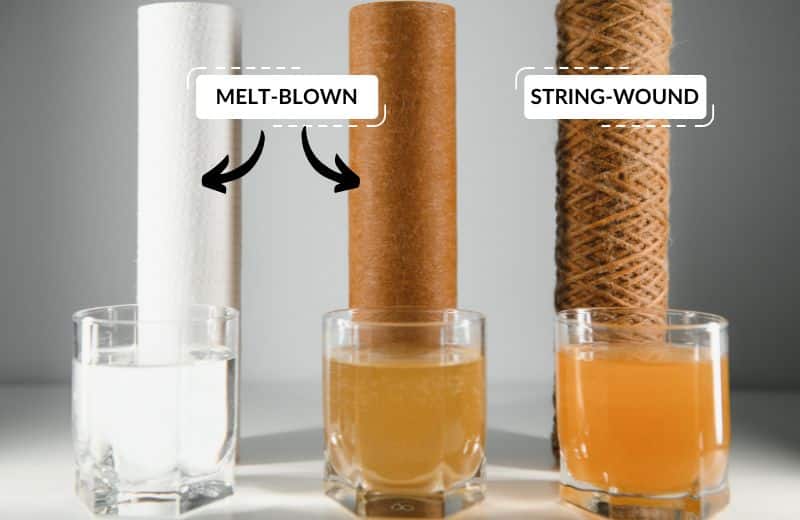
What Issues Does a Water Filtration System Address?
Water filtration systems address the following issues:
- Poor water taste – A water filter system is the best way to remove the contaminants responsible for poor taste or odor, including chemicals like chlorine, heavy metals, iron, and hydrogen sulfide.
- Plumbing and appliance damage – A water filtration system also removes contaminants that could damage your pipes and appliances, such as sediment.
- Unsafe or unhealthy water – Water filtration systems remove contaminants that could be harmful to health even in trace amounts, including chemicals, metals, nitrates, VOCs, and pathogens.
- Poor-quality bath or shower water – Many whole house filter systems use carbon filters to remove chlorine from water, making baths and showers safer and healthier.
👉 See the best whole house water filtration systems of 2025 reviewed side by side
📊 Water Softener Vs Water Filter: Key Differences
Now we know what they are and what they do, let’s look at the key differences between water softening systems and water filtration systems.
Design
Softener systems have a two-tank design, with one tank containing the salt and one containing the resin. The resin tank is topped with a control head, which is used to program the system.
Water filtering systems come in a variety of designs, including single- and multi-stage systems. Most filtration systems are cartridge-based, but some are tank-based.
⚖️ Verdict: Water softeners are tank-based units, while the design of water filtering systems varies.
Performance
A softener unit uses the ion exchange process to swap hardness ions with sodium ions in the resin tank. The unit backwashes periodically to replenish the sodium in the resin beads.
A filtration unit uses physical filtration to trap or grab onto contaminants, preventing them from passing through with water particles.
⚖️ Verdict: Soft water systems use ion exchange softening, while filtration systems use physical filtration.

Intended Result
The intended result of a water softener is to prevent hard water issues by exchanging calcium and magnesium with sodium.
A filtration system’s intended result is to produce cleaner, healthier, better-tasting, better-quality water.
Verdict: Water filters remove contaminants, while softening units soften water.
Install Location
A water softening unit is installed in one specific location: the main water pipe’s point of entry into your home, upstream of the water heater.
A water filtration system may be installed in various locations around your home, including your water pipe’s POE, an under-sink or countertop location, or your showerhead, depending on its use.
Verdict: Water softeners are POE systems, while water filtration systems can be installed in numerous locations.
Maintenance Requirements
There’s one main maintenance task for a soft water system: topping up the salt. You’ll also need to clean the tanks and replace the pre-filter periodically.
Water filtering systems usually have one maintenance requirement in common: the need to replace the filters. The lifespan of a filter depends on its size, materials, capacity, and more.
Verdict: Both filters and softeners need maintenance but generally, filters need more.
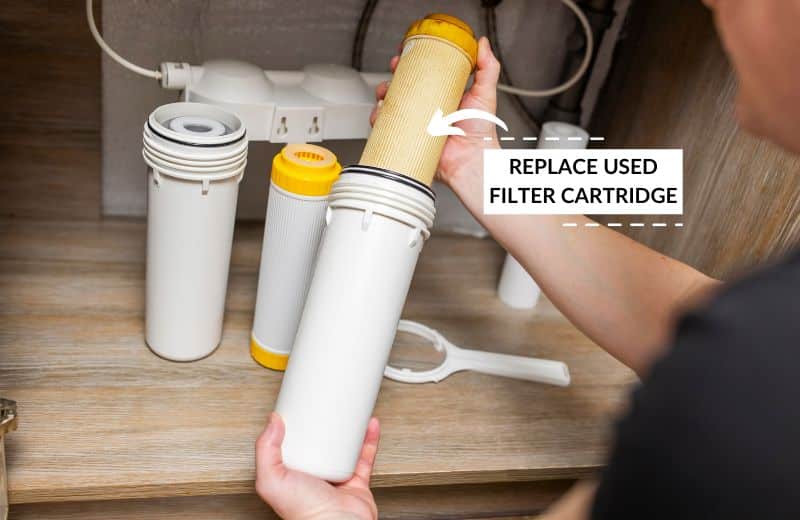
🤔 Do I Need A Water Softener Or A Water Filter?
You need a softener if…
- You have dry skin, hard water scale buildup, and white spots on your dishes
- A hard water test shows that you have any more than 3.5 GPG of water hardness
You need a drinking water/whole home filtration system if…
- You have cloudy or dirty-looking water
- Your water has a rotten egg odor and you’ve noticed rust stains
- Your water tastes like chemicals
- You get your water from a private, untreated well supply
- A water test shows that you have high contaminant levels

⚖️ Water Softener vs Whole House Filter: Do I Need Both?
Both a water softener and a whole home water filtration system can make a significant improvement to your water quality.
If you have hard water that also contains other contaminants like chlorine, you might need both a softener system AND a whole house water filter system.
To determine the quality of your water, you can either:
- Request a water quality report by your local authority (if you use city water)
- Use a testing kit
If you find out that your water is high in both hardness and contaminants, you may want to invest in both a water softener and whole home water filtration system.
By installing a filter upstream (or before) your water softener, you’ll protect the water softener resin from chlorine and extend its lifespan.
Or, if you have very hard water and moderate contamination, install a water softener upstream of the filter, to prevent scale buildup in the filter media.
👨🔧 Remember, installing a water softener and a water filter together is the only way to remove minerals that cause limescale AND contaminants that affect water’s taste, health properties, and overall quality.
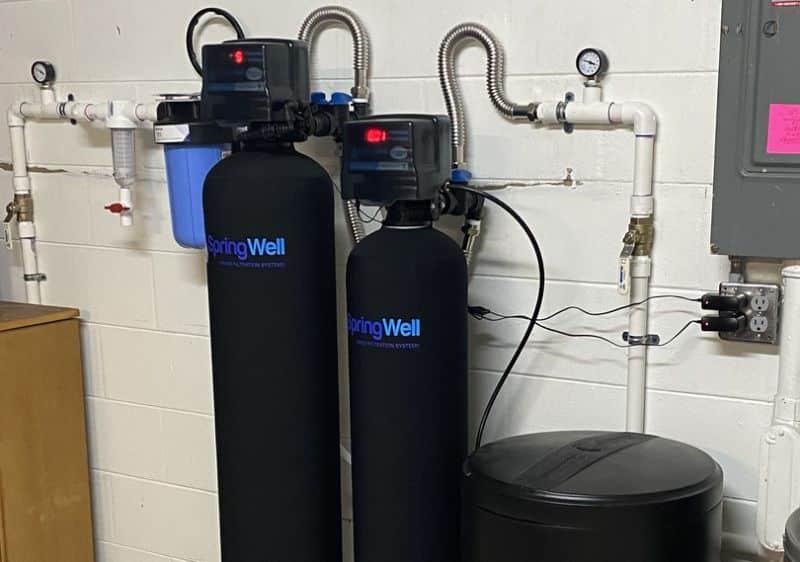
❔ Water Softener Vs Water Filter: FAQ
Do I need a water softener if I have a whole house water filter?
It depends on what your water contains. If you have hard water scale in your home, you might need a water softener even if you already have a water filter. Water filters don’t soften water or prevent limescale buildup.
Is a water filter better than a water softener?
No, a water filter isn’t better than a water softener – but it might be the better choice for you depending on what you want to remove. If you want to prevent problems related to hard water, buy a water softener. If you want to improve your water’s taste and get rid of dangerous trace contaminants, buy a water filter.
Is a water softener and water filter the same?
No, water softeners and water filters aren’t the same. Water softeners soften water by removing calcium and magnesium minerals, while water filters filter water by removing chemicals, heavy metals, and other contaminants.
